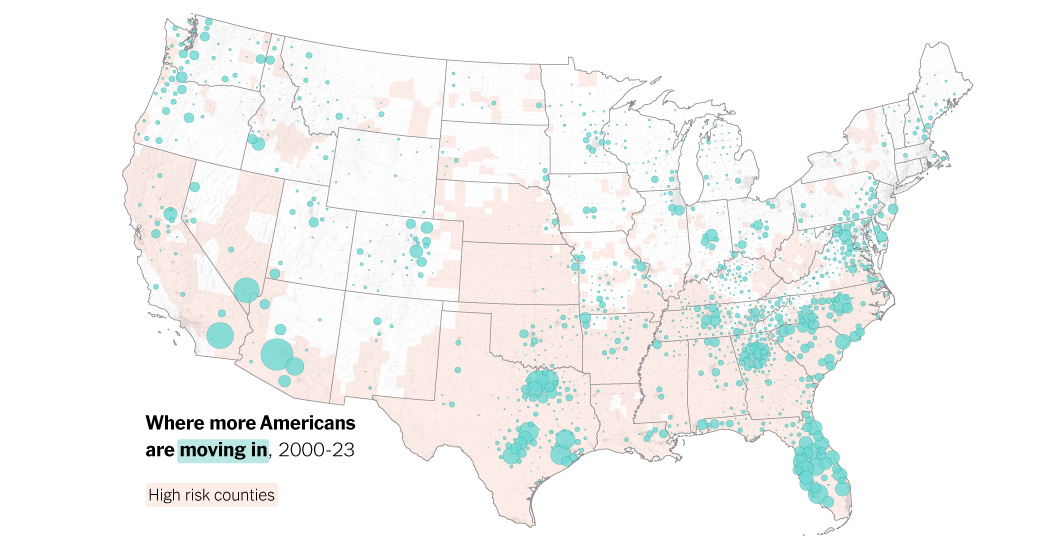Poor people move where it’s cheaper to live. It’s cheaper to live where risk is higher. This is how risk is systematically offloaded onto the lower class. We build and live in these dangerous places, and we suffer all the loss and damage from those risks. The owner class takes all the profits and value from those places while investing little to nothing in them (too risky!)
Newsflash: with the increasing extreme weather events, everywhere is becoming a “disaster-prone area”.
Asheville, NC is 300 miles from the nearest coast and still got its shit rocked by a hurricane.
300 miles really isn’t very far for hurricanes to penetrate. And Asheville is a bowl in the mountains. So water runs to it, and drains out. It just can’t handle that much rain at once. It’s probably happened before, just long ago.
That said, I sat on my deck most of yesterday. It was the kind of weather we used to get all summer long 30 years ago. Now it only happens briefly in the spring and fall. Summers are becoming unbearable. Wildfires are the result.For rain and flooding specifically, new development can make it drastically worse without a huge amount of changes. It’s totally possible that a similar amount of rain 20-30 years ago wouldn’t have caused the same scale of damage, because the water wouldn’t have concentrated as fast.
Lexington, KY felt that hurricane. I’m not sure how far from the coast they are, but that bad boy was still going strong well over the mountains.
I still fail to understand why someone would willingly move to Florida.
All the MAGAs are moving to FL. They love corruption and FL has it in abundance.
Floridian here. Me too, they drive price of living up like mad. all rich folk that kill native bugs :(
Me over here trying to figure out where I want to move like


Canada. The answer is Canada.
Isnt canada on fire all summer every summer now?
And the winters are too short to kill off the ticks now.
But we still get way too much snow at once occasionally. But it doesn’t stay for Christmas.
I was actually thinking the Netherlands… but I also want to pursue a career in Stand-up comedy and acting so… Kinda just leaves cities/states deep in disaster areas (LA, NYC, Atlanta) 🙃
How is Minneapolis/St. Paul Minnesota a high risk area? I’m seeing blue dots in that area.
I think Blue dot is migration to the area and red shading is high risk.
True. I miss typed that. There are blue and red dots in that area.
Probably bc it’s on the Mississippi River.
Flood Insurance Risk Rating 2.0 is kind of sneakily the second best environmental policy Biden got done (after IRA). Actually charging places in flood plains the amount it costs to rebuild, rather than subsidizing it so people repeatedly rebuild in places that flood all the time, will incentivize people slowly to move away from those areas, or at least pay what it costs to live there and know what they’re getting into.
Is it too late to return some of these spots to France?
Go for it, but the security deposit is forfeit.
Oui.
… and stay out.
So half the country, or a quarter of the continent judging by the map. I would guess 90% of people living there were already deeply embedded in local culture before the term climate change was invented.





